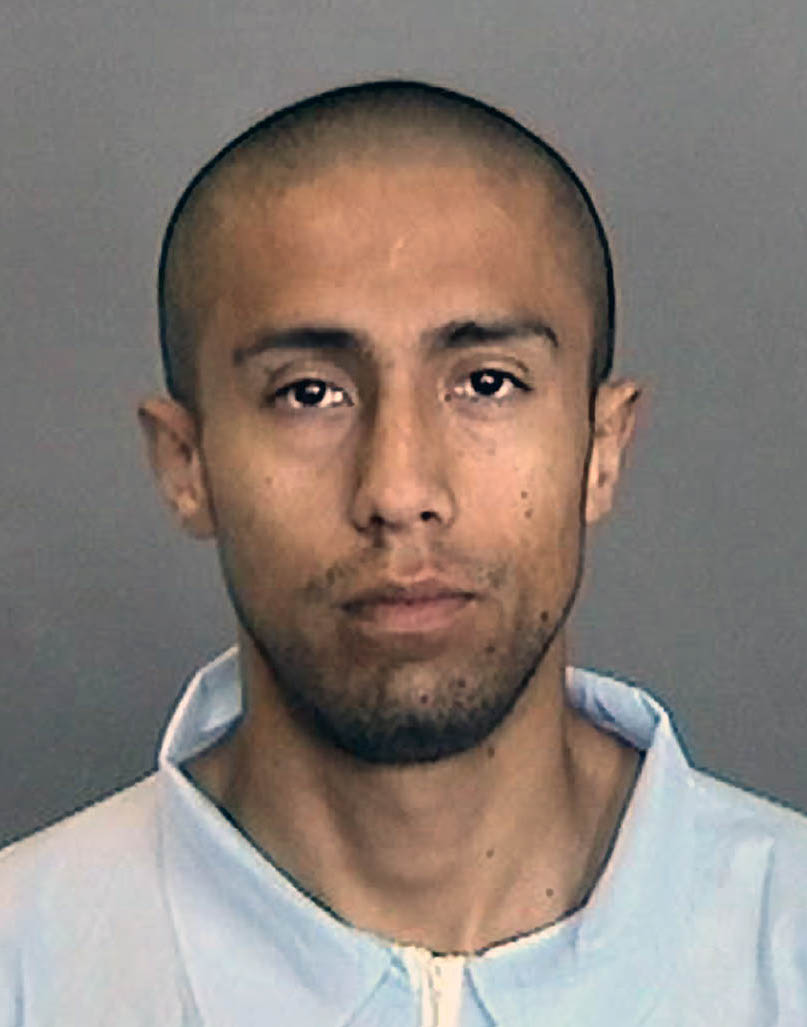
1988 - 2013
Itzcoatl Misael Ocampo
Summary
Name:
Itzcoatl Misael OcampoYears Active:
2011 - 2012Birth:
March 20, 1988Status:
DeceasedClass:
Serial KillerVictims:
6+Method:
StabbingDeath:
November 28, 2013Nationality:
USA
1988 - 2013
Itzcoatl Misael Ocampo
Summary: Serial Killer
Name:
Itzcoatl Misael OcampoStatus:
DeceasedVictims:
6+Method:
StabbingNationality:
USABirth:
March 20, 1988Death:
November 28, 2013Years Active:
2011 - 2012bio
Itzcoatl Ocampo was born on March 20, 1988, in Mexico City. He was the eldest of three children. Shortly after his birth, his family moved to the United States and settled in Yorba Linda, California. His father, a trained lawyer, took a job as a vacuum repairman and rented an apartment.
After 12 years in California, Ocampo and his family completed the legal process to become American citizens. He attended Esperanza High School in Anaheim, graduating in 2006. During his school years, he was known for being friendly and approachable, which made him popular among his peers. The September 11 attacks deeply influenced him, sparking an interest in politics. Ocampo supported the Republican Party and George W. Bush's foreign policies.
At Esperanza High School, Ocampo faced severe bullying due to his height. He was ridiculed for the length of his jeans and was mockingly nicknamed "High Waters." After high school, he enlisted in the United States Marine Corps with several friends. Starting in July 2006, he served at Camp Pendleton in Oceanside, attached to the 15th Regiment of the Medical and Sanitary Battalion. In 2008, he was deployed to Iraq, where his main responsibility was transporting water and fuel to the base. He spent eight months in Iraq and received several deployment awards, including the Iraq Campaign Medal, the Global War on Terrorism Service Medal, and the National Defense Service Medal. During his time in Iraq, he faced disciplinary action for pointing his weapon at an ally, resulting in a demotion and extra duties.
While stationed at Camp Pendleton, Ocampo suffered a significant head injury when a latch on his vehicle failed to lock, hitting him on the head. During the Great Recession, he struggled to find work, eventually settling for a landscaping job. The family faced financial difficulties, losing their home, and Ocampo's father's drug addiction led to his parents' divorce. His mother took Ocampo and his siblings to stay with relatives. Ocampo was honorably discharged in July 2010 and returned to Yorba Linda.
After returning from Iraq, Ocampo showed signs of PTSD and deviant behavior. The death of his close friend Patiño, who died in Afghanistan in 2010, significantly affected him. Ocampo became depressed, experienced frequent headaches, hand tremors, and alcohol abuse. Over the next two years, he struggled to adapt to civilian life, relying on relatives for financial support and refusing psychiatric treatment. He believed he was unqualified for a PTSD diagnosis because he did not engage in combat. By the end of 2011, his mental state had deteriorated significantly, leading to hypochondria and signs of clinical delirium.
murder story
On October 25, 2011, Ocampo visited his former classmate, 24-year-old Eder Herrera, where Herrera's mother, 53-year-old Raquel Estrada, and his brother, 34-year-old Juan, were also present. During the visit, Ocampo suddenly attacked, stabbing Raquel and Juan repeatedly—30 times and 60 times, respectively. Neighbors witnessed the attack and provided the police with a description of the attacker. Due to the resemblance between Herrera and Ocampo, Herrera was arrested. Despite Herrera's denial and lack of evidence linking him to the crime, he remained the primary suspect due to a recent argument with his mother and brother.
On December 21, Ocampo was seen loitering around a shopping center parking lot in Placentia. He then attacked and fatally stabbed a 53-year-old homeless man named James McGillivray. The incident was captured on CCTV, leading to the police releasing a sketch of the suspect.
A week later, Ocampo killed another homeless man, 42-year-old Lloyd "Jim" Middaugh, who lived under a bridge in Anaheim. Middaugh was also fatally stabbed multiple times. Two days after that, Ocampo killed 57-year-old Paulus Smit, stabbing him over 60 times and leaving his body in a library parking lot in Yorba Linda.
By the time of the fourth murder, media coverage about the killings of homeless men in Orange County had increased, prompting police to ramp up patrols around homeless shelters. In early January 2012, the Los Angeles Times interviewed 64-year-old Vietnam War veteran John Barry, who spoke out against the perpetrator and urged potential victims to stay cautious. After reading Barry's interview, Ocampo began stalking him. Barry reported this to the police on January 12, but declined their offer to move into a shelter. The following evening, Ocampo found Barry near a Carl's Jr. in Anaheim, attacked him in front of witnesses, and fled on foot.
Witnesses pursued Ocampo while others called the police. Ocampo attempted to dispose of his bloody clothes but was arrested a few hundred meters from the crime scene. A 7-inch stainless steel knife was found on him. Ocampo was charged with Barry's murder and, after further investigation, was linked to the murders of the three other homeless men. Orange County District Attorney Tony Rackauckas announced that he would seek the death penalty for Ocampo.
On February 4, 2012, bloodstains on Ocampo's shoes linked him to the Estrada-Herrera murders, resulting in his charges for the double homicide and the release of Herrera, who had been jailed for three months.
Ocampo's lawyer claimed he exhibited symptoms of psychosis and was mentally unfit to stand trial. His trial was scheduled to begin on January 17, 2014. On the evening of November 27, 2013, Ocampo ingested several packets of Ajax cleaning detergent he had been stockpiling. He died the following day.